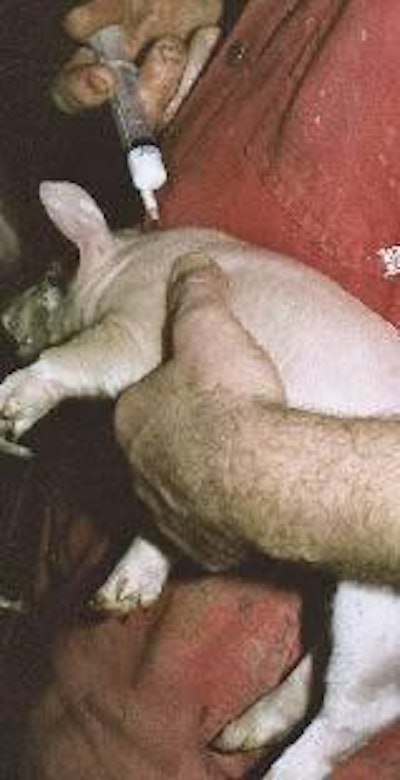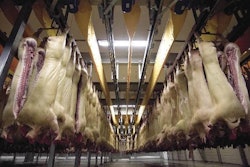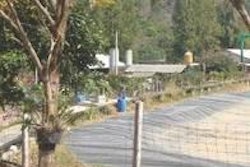
In the modern pig industry we are faced with much more complex pig disease than we used to be and this change is mainly due to the evolution of different viruses, which have forced us to revolutionise our approaches to disease control.
Diseases become complex
Years ago, pig disease tended to be simple single-pathogen problems. One pathogen caused one set of clinical problems. If other pathogens were involved, they were simple bacterial secondary infections taking advantage of the main infection. A good example would be an outbreak of Actinobacillus pleuropneumoniae (APP) in a Mycoplasma hyopneumoniae-free herd. There would be an acute disease outbreak caused by the APP. Other bacteria such as Pasteurella multocida and Streptococcus ssp. may contribute to the signs but controlling the APP would control the problem. Another example could be an outbreak of diarrhoea in weaners due to E.coli.
Now the situation is very different, as we face an array of complex diseases and syndromes involving many pathogens and primary and secondary roles. There are normally several primary pathogens. Perhaps the best example is Porcine Respiratory Disease Complex (PRDC) due to a combination of factors, as shown in the accompanying chart.
This complex is driven by the viral pathogens in varying combinations, while the other factors interact and exacerbate it.
A simpler example is post-weaning diarrhoea in weaners in a PCVD outbreak involving Salmonella, E.coli and possibly TGE. Also remember these problems are not just confined to the growing herd. Reproductive problems also tend to be more complex inter-reactions of pathogens such as PRRSV, Porcine Parvovirus and Leptospira species.
Evolution of new viruses
The main reason for this change has been the evolution of major new viruses. Yes, we have always had viral diseases such as TGE and Porcine Parvovirus, but these tended to happen as specific outbreaks. What we have now is a number of viruses which can interact and have a fundamental impact on the pig. Many of these viruses are shown in the PRDC diagram, but the most important are Porcine Reproductive and Respiratory Syndrome Virus (PRRSV), Porcine Circovirus type 2 (PCV2) and higher pathogenicity strains of Swine Influenza Virus (SIV). Also, could the suggested Factor X in Porcine Circovirus Disease (PCVD) be viral?
One of the features of these new viruses is that not only do they cause disease in their own right, but they interfere with the pigs' immune system, allowing other pathogens to cause further disease. They can even interfere with normal measures used in controlling disease. For example, it has been shown that PCV2 infection will prevent PRRS vaccination from being so effective.
There are other causes of the increase in complex disease syndromes such as keeping pigs in greater numbers, high pig density areas and moving pigs about much more. Also, businesses tend to be under much greater pressure so management practices may suffer (e.g. cleaning and disinfection between batches is reduced). These are also important factors, but the main change is the role of viruses. Simple diseases tended to be simple to control, but modern complex diseases are not. There is a tendency to use high levels of antibiotics, but these have very little effect on viruses and have even been shown to interfere with the immune system. We have to change our approach.
Control is difficult
As always, it is better to be free of as many of these pathogens as possible. First, stock the breeding herds with PRRS and Mycoplasma hyopneumoniae-free pigs. Vaccination can be used to control the major pathogens (e.g. PRRSV and PCV2 if present). Then, adopt segregated rearing systems to reduce the impact of any pathogens that may remain. Continuous flow systems will only make problems worse.
The main problem with this approach is that it generates a population of pigs which is highly susceptible to any introduction of pathogens and depends on preventing pathogens which are present (e.g. PCV2) from building up. Failing to protect the pigs from these underlying infections can result in serious disease outbreaks. Good biosecurity is vital to control these problems.
The main approaches are to prevent the introduction of new pathogens through good external biosecurity and to stop carry-over of pathogens between batches by good terminal biosecurity.
Remember that we are dealing with a large number of pathogens and that the most important ones are viral. For this reason, the disinfectant chosen must have a proven broad spectrum of activity and this must include proven efficacy against PRRSV, PCV2 and SIV.
The disinfectant needs to be able to work at all temperatures that are likely to be experienced and should be easy to use. DuPont Animal Health Solutions Virkon S is an example of one disinfectant that has this activity as shown by field work (e.g. for PRRSV) and in the laboratory (e.g. for PCV2). For ongoing use, a product should be less likely to generate acquired disinfectant resistance. Such a disinfectant should then be built into a specialist biosecurity programme to work at an internal and external level. It should be used following thorough cleaning, including a heavy duty detergent and carried through into such areas as vehicle biosecurity, terminal disinfection and many other areas of continuous protection for the pigs.
Once we have prevented infection and build-up of challenge, especially of these viruses, then we can utilise other methods to control disease. Examples of this would be vaccination (e.g. for PRRS and PCVD) and strategic medication where bacterial secondaries are increasing.
Pig diseases in recent years have changed fundamentally. While modern production systems have controlled traditional single pathogen diseases, the emergence of new disease syndromes largely driven by complex viral interactions has stopped us from gaining the benefits we expected.
Recent experiences with PRDC, PCVD and highly pathogenic strains of SIV show that we need to design a programme of very high-level biosecurity.
















